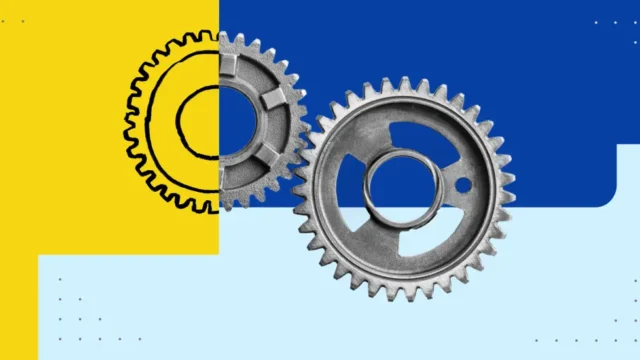
A Guide to Automated Financial Reports
See how accounting firms can streamline their document and statement creation process.
Financial reporting automation relies on software to automatically find, organize and analyze financial data from a company’s transactions and operations. These programs can not only source data, but they can also use artificial intelligence to fill out ledgers, create financial statements and meet compliance requirements for financial reporting and tax filing.
According to McKinsey, most businesses will be able to automate one-quarter of their processes within the next five years. Accounting and financial reporting are common targets for this type of automation for several reasons. First, automation lowers costs for firms. Also, software reduces data entry or calculation errors, helping accountants meet Government Accounting Standards Board and Financial Accounting Standards Board requirements for reporting.
Finally, since most payments are processed digitally, human intervention is not necessary for accurate bookkeeping.
Here is a look at the benefits, requirements and potential issues when automating financial reporting processes.
The benefits of automated financial reports
Automating financial reports brings several advantages to companies and accounting firms, including:
- Reduced human error: Manual data entry has a one-percent error rate. If accountants or auditors rely on this incorrect data to make calculations, the reports they produce will not be accurate. Automated financial reports populate documents without human intervention, eliminating the impacts caused by human error.
- Increased productivity: Automated financial reporting software will not completely replace accountants. However, it will save them from the time-consuming manual task of building reports and free them to work on higher-level budgeting, analysis and advisory work.
- Lower overhead: After investing in the software, firms won’t have to spend money compiling reports. They may be able to reduce bookkeeping staff or pay contractors for fewer hours of work.
- Transparency and streamlined auditing: Automated reporting software stores data within the system. Not only does this feature allow you to trace the sources of the final figures in the report, it also streamlines the auditing process.
Also, automated financial report software always meets reporting deadlines. Because the process is run by a computer, the report will not be delayed due to employee sick days, low productivity or other problems.
How does automation differ from traditional methods of financial reporting?
Traditional methods for building financial reports rely on data from different sources, which the bookkeeper or accountant uses to make manual or computer-based calculations necessary to produce the figures for the report.
Even if computer-based ledgers are involved in the process, traditional methods rely on human intervention to choose which data to collect and manually add it to the report or to software that performs the necessary financial calculations.
Automated software is connected to the systems that handle all the transactions for the company, so the data gets recorded automatically and added to the report immediately. For example, the software connects to the invoicing and payment processing systems and automatically records data when a transaction occurs.
In other words, the data collection and calculations happen instantly.
Challenges to implementation
The advantages make automated financial reporting software an attractive option for many small and mid-sized businesses. Unfortunately, there are a few challenges that can make implementing such tools difficult.
- Lack of compatibility: Ideally, automated reporting software should be able to collect data from all the different software solutions that handle the company’s financial transactions. If a firm uses outdated systems, automating any accounting tasks could require multiple upgrades.
- Technical knowledge requirements: If the systems are not fully compatible or even if there is a slight disconnect, it may take someone with technical knowledge to make the necessary updates.
- Employee relations issues: Some employees may see automation as a challenge to their job. A company may need to get employees to buy in to the idea that the software is a way to improve efficiency and not a job-stealer.
Finally, even if automated software can streamline the reporting process, it will require companies to use more traditional methods to make changes to the way they operate. Careful planning is necessary to ensure this new tool does not create redundancies in other areas.
Best practices for automating financial reports
Here’s a look at the important steps that can make the adoption of automated financial reporting easier.
- Plan for the new workflow before implementation: Since good automated software is customizable and scalable, it is possible to decide if the company should completely revamp its accounting workflow or automate the system based on its current design.
- Iron out technical details: IT staff members and accounting employees or contractors should be consulted during the implementation process to ensure full compatibility and accuracy.
- Take a test run: Financial reports are essential for stakeholders and, depending on the size and location of the company, compliance. Therefore, a test run is important to verify everything is working perfectly before completely switching from the previous reporting method.
The company should also consider accessibility. For example, cloud-based software allows people in different locations, including contractors and remote workers, to access the reports and upload necessary data.
What financial reporting tasks can be automated?
Financial reporting software can handle various types of cash flow and income statements, balance sheets and company performance and equity statements for shareholders.
Here are some of the tasks that a company can target for automation.
- Data entry: As long as the invoicing, banking, sales, payroll and payment processing systems are compatible with the software, the software can collect and enter data automatically.
- Basic calculations: Software typically uses algorithms to perform basic calculations for entries on the final report. These can happen automatically and update in real time.
- Data analysis: Companies can use data analysis tools to glean insights about performance, compliance and other important subjects. Such software can also deliver business intelligence insights to help with process improvements and strategic planning.
Any other reporting-related tasks that are prone to human error or require excessive amounts of tedious work are perfect candidates for automation.
What does financial reporting automation look like?
Here are examples of how automation can streamline financial reporting.
To create a cash flow statement, the accounting software would draw data from connected accounts payable and accounts receivable records, accounts covering other operating expenses, profits from any investment activities or shareholder dividend payments and other expenses or income. By simply adding and subtracting data, the software can create a complete report.
Meanwhile, an income statement compiled using automation would draw data revenue and expense data from business accounts, tax information, operating costs and materials spending. It would then perform basic calculations to arrive at gross and net income figures.
Helpful tools and resources
Here are tools that can help support financial reporting automation.
- Cloud-based software improves accessibility because users can access it from anywhere and they have the flexibility to connect different data sources without manually uploading or entering the information.
- Working papers show the different steps and data used in an audit. Recording this data automatically can help with documentation and evidence supporting the final report.
- Visualization applications help accountants create graphs and other elements that can help explain the figures compiled automatically by the reporting software.
Companies, agencies and accounting firms are able to streamline their document and statement creation processes and limit errors with automated financial reporting software.







